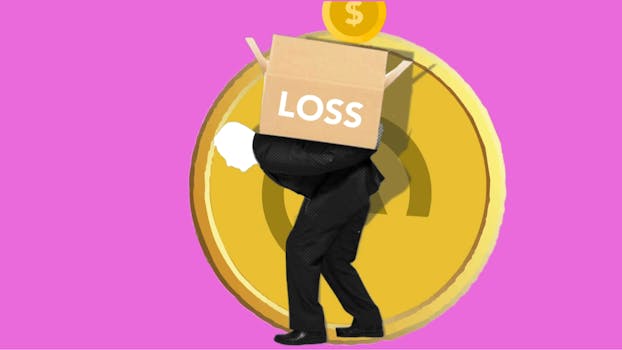Companies with the best and the worst fundamentals.
Lists of companies in NSE500 with the best and the worst fundamentals...
Lists of companies in NSE500 with the best and the worst fundamentals...
List of the latest important filings for NSE500....
Lists of companies in NSE500 with the best and the worst technicals...

An analysis of South Asia's economic trajectory focusing on the potential of...

An in-depth look at the UK’s Q2 2025 GDP release by ONS,...

This article analyzes the deteriorating global growth prospects, particularly in emerging markets,...

The East Asia and Pacific (EAP) region continues to exhibit GDP growth that remains above the global average. However, projections indicate that growth will decelerate in 2025 and further in 2026. High-frequency indicators of economic activity reveal a noticeable slowing momentum. Although retail sales are on the rise, consumer confidence has yet to rebound to pre-COVID levels. Industrial production remains robust, but business confidence is dampened. While exports have surged ahead of recent tariff hikes, new export orders are showing signs of weakness.
The sluggish economic performance is attributed to a less favorable external environment. This includes higher trade restrictions, a reduction in global uncertainty—yet still elevated—and a general slowdown in global growth, along with persistent domestic challenges.
Higher tariffs could significantly diminish EAP exports to the United States. Nonetheless, the overall impact on total exports and real incomes may be less severe, as most exporters face similar tariffs. Over time, exports are expected to adjust, shifting towards other destinations. Additionally, the domestic value added in U.S.-bound exports constitutes a relatively small share of GDP across most countries.
Heightened uncertainty regarding economic policies, both domestically and internationally, is likely to hamper investment and employment decisions within the EAP. Firms have adopted a cautious “wait-and-see” approach, resulting in delays or reductions in capital expenditures.
A deceleration in global growth, with consensus forecasts for 2025 being revised downward since January, poses further risks to the region's prospects. For instance, a 1 percentage point decrease in G7 growth could potentially shrink growth in developing EAP countries by an estimated 0.6 percentage points within the subsequent year.
Despite the ongoing challenges, global financial markets have thus far remained resilient in the face of policy turbulence. EAP countries are experiencing relatively favorable financial conditions. However, the recent appreciation of most regional currencies against the dollar could threaten export competitiveness. Thus, the net ramifications of financial developments remain uncertain.
Creating more and better jobs is central to the development challenge facing the EAP region. Employment provides not only a source of income but also dignity, purpose, and a path to better living standards for individuals and their families.
Most job seekers in the EAP region are able to secure employment; the employment rate is generally high. However, youth unemployment presents a stark challenge, with one in seven young individuals in China and Indonesia lacking jobs. Labor force participation remains low in the Pacific regions and among women, exhibiting a gap of approximately 15 percentage points relative to men in countries like Indonesia, Malaysia, and the Philippines. Furthermore, a significant number of individuals find themselves in low-productivity or informal jobs. The segment of the population vulnerable to falling into poverty has now outstripped the middle class in many nations.
EAP countries have not fully harnessed the potential benefits of transitioning workers from lower to higher productivity sectors and firms. During the 1970s and 1990s, there was significant labor migration from agriculture to more productive manufacturing and service roles, spurred by dynamic, export-oriented sectors. However, since the 2000s, the majority of labor shifts have been towards low-productivity, often informal service jobs within retail and construction sectors.
When examining the enterprise level, it is young firms—not small ones—that have emerged as key job creators. In Malaysia and Vietnam, young firms generated 57 percent of employment and 79 percent of job creation between 2000 and 2019. Nevertheless, this dynamism has been stifled due to a decline in new firms entering the market, coupled with slow post-entry growth for startups within EAP. For example, in the United States, successful startups increase their employment by sevenfold by age 30, while in China, the increase is only fourfold, and in Vietnam, under twofold.
The interplay between economic opportunities and human capacities determines job creation. Opportunities are influenced by trade patterns and technology adoption, while capacities are reliant on access to quality education and training.
While EAP countries have made significant progress in universalizing basic education, with over half the population now attaining at least secondary education, foundational skills remain a concern as many children do not acquire essential competencies. The quality of tertiary education varies, and except for China and Malaysia, the proportion of graduates in STEM fields lags behind that of more advanced economies.
Opportunities are contingent upon production choices, influenced by both economic structure and trade patterns, as well as technological deployment. Trade has historically bolstered productive employment, as evidenced by recent developments in Cambodia and Vietnam. However, these gains can be inconsistent and susceptible to adverse external shocks, such as foreign protectionism.
The EAP region faces domestic barriers to firm entry and trade protection that significantly impede opportunities. Despite low manufacturing tariffs across EAP nations, non-tariff measures remain high. Regulatory barriers inhibit service trade more than in other regions, while China and Vietnam impose policy restrictions that curtail labor mobility, further constraining opportunities.
Technological advancements, particularly in robotics, have catalyzed productivity and industrial employment in fast-adopting Southeast Asian economies. For instance, in Vietnam, each additional robot deployed per thousand workers has been associated with district-level employment and wage increases of approximately 6–9 percent and 2–4 percent, respectively.
However, these benefits have not been uniformly distributed. Between 2018 and 2022, the adoption of industrial robots created around 2 million jobs for skilled formal workers while simultaneously displacing approximately 1.4 million low-skilled informal workers in routine and manual positions, who have been compelled to transition into the informal sector.
To foster more productive jobs in the EAP region, reform efforts should focus on:
Growth trajectories in EAP countries indicate a slowdown or plateauing as external conditions worsen and domestic issues linger. China's growth, the largest economy in the region, is projected to decrease from 4.8 percent this year to 4.2 percent by 2026 due to anticipated declines in export growth, potential cuts in fiscal stimulus in light of rising public debt, and ongoing structural deceleration. The rest of the region is expected to grow by 4.4 percent in 2025 and 4.5 percent in 2026 against a backdrop of increasing trade barriers, persistent global economic policy uncertainty, and a slowdown in global growth, further compounded by domestic political and policy uncertainties, particularly prevalent in Indonesia and Thailand. The Pacific Island Countries face even greater challenges, with projections suggesting a meager growth rate of only 2.7 percent in 2025 and 2.8 percent in 2026 as they navigate vulnerabilities linked to global economic conditions and climate-related events.
Economic performance in the EAP region is heavily influenced by three primary external developments: rising trade restrictions, increasing global economic policy uncertainty, and a general decline in global growth. At the same time, domestic policy approaches—particularly a focus on fiscal stimulus over structural reform—will likely play a pivotal role in shaping both short-term and longer-term growth outcomes.
The increasing trend toward trade protectionism presents a significant challenge for EAP economies, which are largely reliant on external demand. The United States, an essential trading partner, has recently implemented higher “reciprocal tariffs” affecting most trading partners, alongside increased tariffs on selective imports in sectors like steel, aluminum, copper, automobiles, and auto parts. While China faces the most substantial U.S. tariff rates, the effects on other EAP nations vary according to their export composition. Countries such as Thailand, Vietnam, the Philippines, and Malaysia, with a strong focus on electronics and semiconductors, are less impacted by U.S. tariffs compared to those exporting apparel and other vulnerable products, such as Cambodia, Laos, and Myanmar.

A professional analysis of the August 2025 U.S. CPI report from the...

A professional analysis of the IMF’s October 2025 Global Financial Stability Report,...